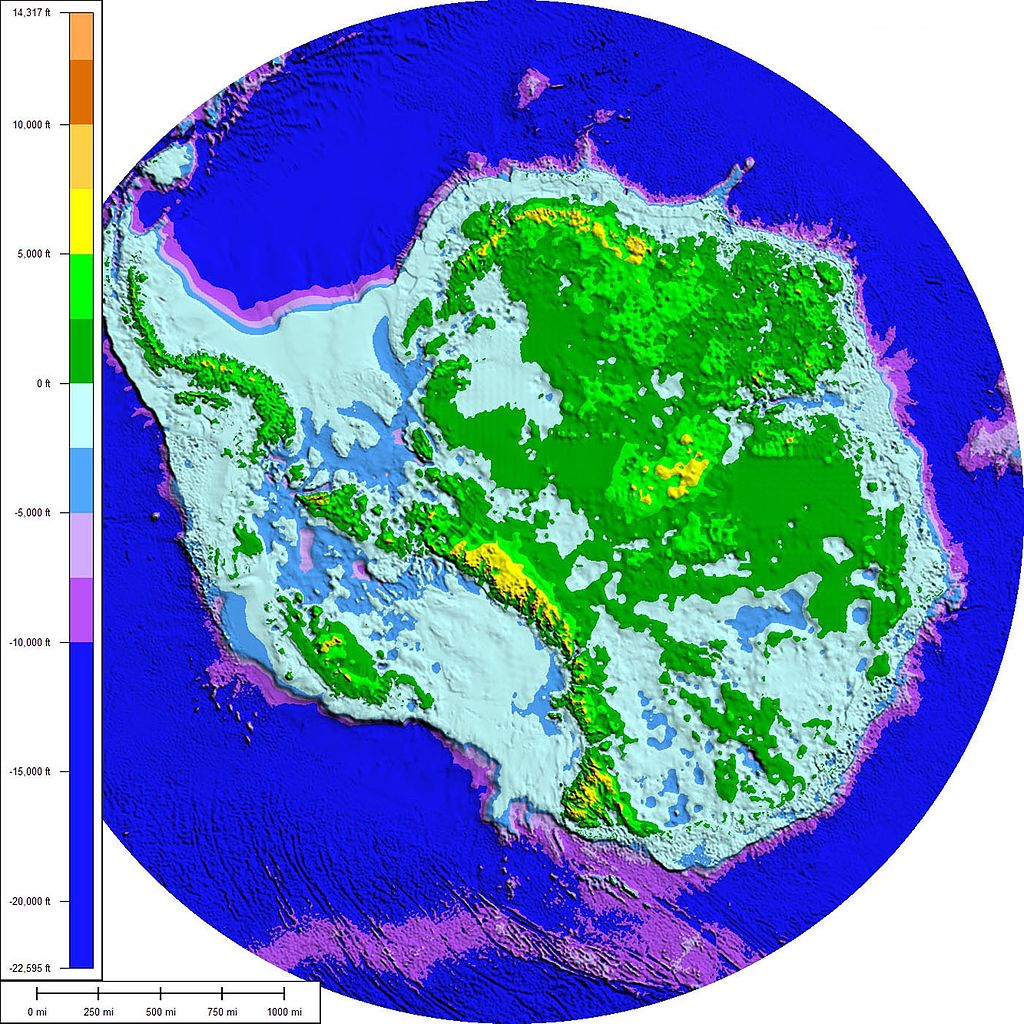AntarcticBedrock
Autor/Urheber:
Paul V. heinrich
Attribution:
Das Bild ist mit 'Attribution Required' markiert, aber es wurden keine Informationen über die Attribution bereitgestellt. Vermutlich wurde bei Verwendung des MediaWiki-Templates für die CC-BY Lizenzen der Parameter für die Attribution weggelassen. Autoren und Urheber finden für die korrekte Verwendung der Templates hier ein Beispiel.
Shortlink:
Quelle:
Größe:
1400 x 1400 Pixel (521358 Bytes)
Beschreibung:
The above map shows the subglacial topography and bathymetry of Antarctica. As indicated by the scale on left-hand side, the different shades of blue and purple indicate parts of the ocean floor and sub-ice bedrock, which are below sea level. The other colours indicate Antarctic bedrock lying above sea level. Each colour represents an interval of 2,500 feet in elevation. Map is not corrected for sea level rise or isostatic rebound, which would occur if the Antarctic ice sheet completely melted to expose the bedrock surface.
Lizenz:
Credit:
This map was prepared from BEDMAP gridded data-set for bed-elevation south of 60 degrees S using Global Mapper 7.0.1. The faint rectilinear pattern seen in the shaded relief is an artifact of the gridding of data from linear seismic surveys. The data used to make this map came from "A new ice thickness and subglacial topographic model of the Antarctic" prepared by the BEDMAP Consortium, which is sponsored by the European Ice Sheet Modelling Initiative, Scientific Committee on Antarctic Research.
Relevante Bilder
Relevante Artikel
Antarktischer EisschildDer antarktische Eisschild ist eine der beiden polaren Eiskappen. Er ist die größte Eismasse der Erde und bedeckt den antarktischen Kontinent (Antarktika) nahezu vollständig. Im antarktischen Inlandeis und dem von diesem gespeisten Schelfeis sind fast 90 Prozent des Eises und 70 Prozent des Süßwassers der Erde gebunden. Die Fläche des Eisschildes beträgt 12,3 Millionen Quadratkilometer, das Volumen 26,5 Millionen Kubikkilometer. .. weiterlesen


